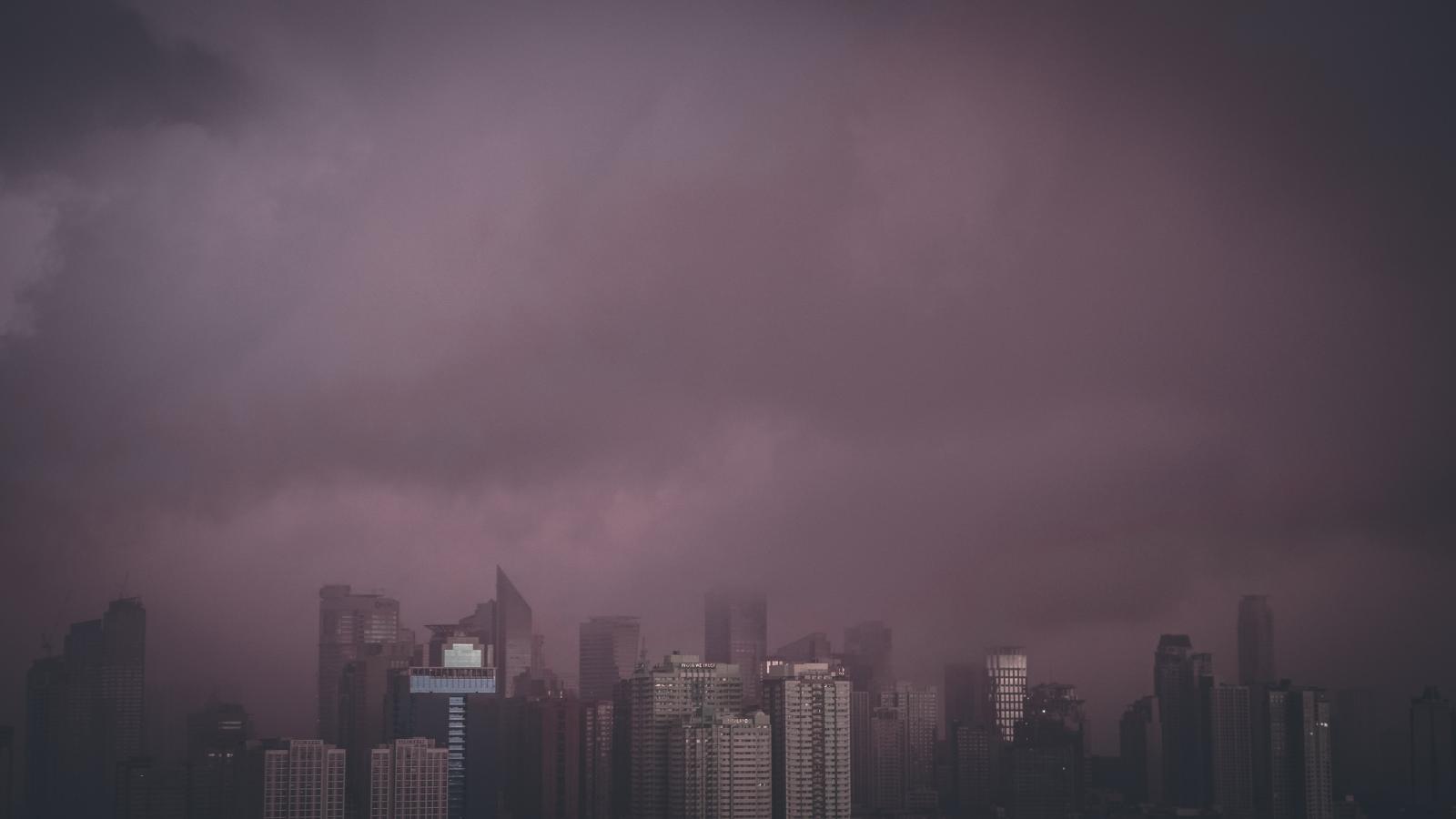
The European Parliament's vote (and subsequently the Council of Europe's) on the new European Directive on air quality is expected for September 13. This directive updates the allowed atmospheric pollutant limits, bringing them closer to those established by the WHO in 2021. Resistance to the new objectives, mainly coming from the industrial world and established economic interests in certain regions, makes the outcome of the vote uncertain. However, there are no serious scientific or political reasons to oppose or attempt to dilute the more ambitious limits proposed by the new directive.
Image credits: JC Gellidon/Unsplash
The new European Directive on air quality, currently under discussion in the European Parliament, updates the concentration limits of major air pollutants, bringing them closer to those set by the new guidelines of the World Health Organization (2021). The outcome of the vote, scheduled for September 13, is uncertain. The new law proposed by the European Commission in October 2022 outlines various air quality standards to be achieved by 2030, aiming for the "zero pollution" goal by 2050, leaning towards a more realistic intermediate scenario. However, the European Parliament's Environment Committee (Envi) voted in late June 2023 to adopt the WHO thresholds by 2030 (see here). In turn, the center and right-wing political forces in Parliament have proposed several amendments that dilute pollutant limits and, in some cases, extend the timeframe to achieve them: from 2030 to 2040, "adjusting" the legal provision that allows the most polluted European regions (including the Po Valley) to postpone compliance by 5 years.
In short, science has spoken, now politics decides. On the 13th with a vote from the Parliament, and subsequently from the Council of the European Union. Regardless of the outcome, we will bid farewell to the "old" Air Quality Directive from 2008 and adopt one that at least aims to virtually reduce to zero the number of premature deaths and illnesses from air pollution.1
Stricter limits to reduce health and environmental damage
Reducing the main air pollutants - especially fine particulate matter (PM10 and PM2.5), nitrogen dioxide (NO2), and ozone (O3) - goes hand in hand with the net zero emissions process of the European Green Deal. Like this, the European strategy for reducing air pollution should be divided into two main stages: more than halving (-55%) premature deaths attributable to pollution in Europe by 2030, and reducing pollutants to negligible concentrations from a health perspective by 2050. Currently, premature deaths attributable to air pollution in Europe are about 300,000 (in Italy about 50,000), and many more people suffer from respiratory diseases such as asthma, chronic bronchitis, and lung cancer; heart conditions, such as heart failure or heart attack, but also diabetes, reproductive outcomes such as low birth weight, and neurological conditions such as cognitive difficulties and dementia.
With health damages in mind, as well as the environmental consequences of pollution on ecosystems (for example, nitrogen eutrophication and crop damage from ozone), the new air quality directive raises the bar by setting, among other things, concentration limits for 12 different pollutants, which will become operational in 2030.2
The new limits
Let's see what the new directive proposes, considering at least the two main pollutants, PM2.5 and NO2: the European document relies on a thorough impact assessment that outlines 19 options for 2030, which can be simplified into three scenarios: the most ambitious reflects the WHO guideline values of 5µg/m3 (micrograms per cubic meter) for PM2.5 and 10 µ/m3 for NO2; the intermediate scenario sets 10 µg/m3 for PM2.5 and 20 µg/m3 for NO2, which in the third scenario rise to 15 µ/m3 and 30µg/m3, respectively.
All three actions are improvements over the current directive's limits, which are 25 µg/m3 for PM2.5 and 40µg/m3 for NO2. Of course, there are many more substances, and the limit framework is more complex, as can be seen in the table below.

Air quality standards for different pollutants, respectively, of the current European directive (2008), the WHO guidelines (2021), and the three main options considered in the European Commission's impact study for the choice of the new directive's limits by 2030 (that of the current directive proposal corresponds to the penultimate column, intermediate between the most ambitious option as it is identical to the WHO guidelines (on the left) and the less stringent one (last on the right). Source: European Commission.
In addition to setting new limits and other parameters,3 the directive under discussion indicates improvements to the monitoring network, proposes tighter controls and timelines for countries that do not meet these limits, and for the first time allows pollution victims to request compensation.
Who opposes the new directive's more ambitious political options?
Resistance to the new objectives mainly comes from the industrial world and established economic interests in certain regions. Consider, for example, the coal and other fossil industries, but also intensive farming, responsible for almost all ammonia (NH3) emissions, which come from animal waste and combine with nitrogen oxides to form secondary particulate matter. But there are also some regional administrations such as Lombardy, Piedmont, Veneto, and Emilia-Romagna, which already struggle to meet current limits and fear they will not be able to meet the new ones even more.
However, reading the extensive scientific documentation prepared for the new directive (downloadable from this link), the challenge of bringing even the most critical areas like the Po Valley to a more acceptable health and environmental situation is not impossible at all. And it would also be economically advantageous, given the reduced mortality and morbidity, and the reduced impacts on ecosystems, which add up to quantifiable benefits of about 30-40 billion euros compared to costs of about 4-7 billion euros for 2030.
Mission impossible? It doesn't seem so
But is all this technically feasible? According to the Commission, yes. The first thing to note is that the pollutant thresholds of the current directive are already met by the vast majority of Member States, a sign that the 2008 directive has worked, and that today the European population is exposed to much lower concentrations than ten years ago. As the impact assessment prepared for the new directive states: "In 2020, concentrations of fine particulate matter (PM2.5) exceeded the EU's annual limit value in at least one sampling point in three Member States. These concentrations above the limit value were recorded in 2% of all monitoring stations and mainly occurred in urban or suburban areas. As for nitrogen dioxide (NO2), seven EU Member States recorded concentrations above the annual limit value, with exceedances in 2% of all monitoring stations."
The data shows that, despite GDP growth in Europe, exposure to pollutants has decreased. Moreover, a reduction in pollutant concentrations is also observed globally, at least since 2011.4
However, despite these advances, the current directive's values do not guarantee not getting sick and dying from pollution, and therefore need to be progressively adjusted to values 3 to 5 times lower, as provided by the WHO guidelines.
The case of the Po Valley
The Po Valley, along with some areas of Eastern Europe, represents a critical area, both due to the persistence of strong emissions and the atmospheric stagnation conditions that characterize it.

Concentration of PM2.5 in 2020 in Europe. Source: European Commission.
For this reason, the European Commission's impact assessment report dedicated a series of pollutant concentration simulations to it based on different intervention scenarios. Even in the Po basin, there has been a reduction in pollutants for years in conjunction with the local air quality plans required by the current directive, which seem to make it possible to respect the new limits in less than a decade. In addition to the measures provided for by the various decarbonization plans of the Green Deal, Fit for 55, and Repower EU, structural interventions are needed, in particular:
- decisive actions to combat traffic, especially old diesel vehicles (responsible for most NO2 emissions),
- measures to progressively reduce biomass combustion to zero, which still accounts for 20% of heating in the Po basin area and affects the production of particulate matter and non-metallic volatile organic compounds (NVOC).
- actions to reduce ammonia emissions from agricultural and livestock activities that heavily contribute to the formation of secondary fine particulate matter.

Time series of PM10 and NOx emission factors and the number of heavy and diesel vehicles in the Po basin. PM10c is from exhaust gas, PM10w is from brake wear, tires, etc. Source: Alessandro Marongiu et al. Atmospheric Emission Sources in the Po-Basin from the LIFE-IP PREPAIR Project. Scientific Reports.
As is evident even from the figures below, the European Commission's expert simulations also show a trend towards a cleaner and healthier Europe for the Po Valley, as increasingly demanded by European citizens and stakeholders in various demographic surveys.

From left to right and from top to bottom, annual average concentrations of PM2.5 in the Po Valley, in 2020 (first box at the top), followed by scenarios for 2030, progressively stricter. Source: European Commission.
As the European Respiratory Society argues in a recently published position statement, "The WHO's air quality guidelines for 2021 have had the courage to set extraordinarily low recommendations for the annual concentrations of PM2.5 and NO2, respectively five and four times lower than the current European Union limit values. Therefore, aligning the new EU air quality standards with the WHO guidelines represents a historic opportunity to implement a key health prevention strategy. This would avoid substantial health damage linked to slowing global warming, but above all, it would result in immediate health gains in terms of reducing health impacts due to poor air quality."
Therefore, there are no serious scientific, let alone political, reasons to oppose or try to dilute the more ambitious limits proposed by the new European directive, which by mid-century at the latest must erase the heavy toll of deaths and illnesses from pollution.
Notes
-
Air quality directives are part of a global policy framework for clean air based on three main pillars. The first consists of air quality directives, which set quality standards regarding the concentration levels of 12 atmospheric pollutants. The second is the Directive on the reduction of national emissions of certain atmospheric pollutants (NEC Directive), which defines each Member State's commitments to reduce emissions of the main atmospheric pollutants and their precursors, acting within the EU to achieve a joint reduction in transboundary pollution. The third consists of policies that set emission standards for the main sources of atmospheric pollution, such as road transport vehicles, domestic heating plants, or industrial plants.
-
These are: particulate matter (PM2.5 and PM10), nitrogen dioxide (NO2, including NOx), ozone (O3), sulfur dioxide (SO2), carbon monoxide (CO), benzene (C6H6), benzo(a)pyrene (BaP), lead (Pb), arsenic (As), cadmium (Cd), nickel (Ni).
-
The directive prioritizes limits beyond which recovery plans and possibly sanctions are triggered. But it also provides for other parameters, such as attention and alarm thresholds, long-term objectives, and, of particular importance, the objectives of reducing the average exposure of the population to the various pollutants.
-
According to a study just published in Nature Communications, satellite and ground data worldwide show that "population-weighted global exposure to PM2.5, correlated with both pollution levels and population size, increased from 1998 (28.3 μg/m3) to a peak in 2011 (38.9 μg/m3) and subsequently decreased steadily (34.7 μg/m3 in 2019)." Chi Li et al. Reversal of trends in global fine particulate matter air pollution. Nat Commun 14, 5349 (2023). https://doi.org/10.1038/s41467-023-41086-z



